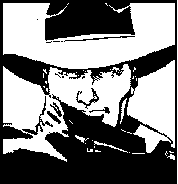Post by TheShadow on Nov 22, 2006 20:14:08 GMT -5
www.mercurynews.com
By Daniel Brown
Mercury News
Upset by the unimaginative offense, Raiders players complained to the coaches and even rebelled on the field. The biggest star wanted the ball more and said so. The locker room was so chaotic that, as one player put it, ``we thought dysfunction was function.''
Last month?
Well, yes. But it's not the first time. As a new documentary airing this week makes clear, those story lines helped define the 1983 Los Angeles Raiders, a team that NFL Films has selected as one of its 20 greatest Super Bowl champions.
Marcus Allen, like the current Randy Moss, was the disgruntled player who (along with teammates) wondered why his talents weren't being put to greater use. In the film, Allen recalls approaching owner Al Davis and telling him of his desire to run more.
``Take a few laps,'' Davis allegedly replied.
Allen eventually got his wish. After a regular season in which he managed just one 100-yard rushing game, the future Hall of Famer sprinted 74 yards against the Washington Redskins in one of the most famous runs in Super Bowl history.
The saga behind that run -- and the season-long frustration leading up to it -- is one of the typically engaging and personal stories in the NFL Films series.
Steve Sabol and his crew put together 40 one-hour documentaries, one for each Super Bowl champion, and a 53-man panel ranked the top 20. The NFL Network will count down its results starting with the '83 Raiders -- team No. 20 -- on Friday at 5:30 p.m. The top team will be revealed Feb. 3, the day before Super Bowl XLI. The other documentaries -- the ones that didn't crack the top 20 -- will air next year, beginning after the Pro Bowl. (More scheduling information at www.nfl.com/americasgame.)
For this series, Sabol mercifully avoided the recent trend of non-stop talking heads. Instead of cramming the hour with the natterings of every player, journalist, celebrity or parking lot attendant within a whiff of the big game, he limited the discussion to three erudite participants.
The Raiders film, for example, features Allen, Howie Long and Todd Christensen, and they weave yarns instead of spouting sound bites.
``I've seen documentaries with 35 talking heads,'' Sabol said Monday from his office in Mt. Laurel, N.J. ``Not only that, but they would chop up all those heads and then put them back together. They have one person starting a sentence and somebody else finishing it, all while making irrelevant cutaways.''
In another impressive bit of restraint, Sabol's subjects appear just once -- no matter how many Super Bowls they won. The 49ers, for example, make the top-20 list three times, but each documentary features a new cast for the teams in 1984 (Russ Francis, Keena Turner, Dwight Hicks), 1989 (George Seifert, Tom Rathman, Jerry Rice) and 1994 (Steve Young, Brent Jones, Merton Hanks).
Each original interview lasted about 2 1/2 hours. ``I sit them down and say, `Look, this is the closest you're ever going to come to a North Korean military interrogation,' '' Sabol joked. ``We go over every little thing.''
The result is like giving a bottle of wine time to breathe. Stories have a beginning, middle and end. In the Raiders film, Long does his best to explain the complicated soul of Lyle Alzado, whom teammates nicknamed Three Mile Lyle after the nuclear plant accident because ``we never knew when he was going to blow.''
Christensen talks about the predictability of the offense and recalls how tackle Henry Lawrence reacted to one play call by saying, ``Forget that. We're not running that play. Let's run this instead.''
Although each player speaks reverentially of Coach Tom Flores, Christensen said that ``once the game started, it was our field.''
These are not highlight films. While there are plenty of clips of the action, there are also long segments in which players speak directly to the camera. The goal was to tell a story that was both epic and intimate. Sabol said he learned that trick from Irvin Kershner, director of such films as ``The Empire Strikes Back,'' who told him: ``The most dramatic thing in movies is the human face.''
And there is plenty of drama. In making the 40 documentaries, Sabol reached a surprising conclusion about greatness. He said only three teams had smooth sailing: the 1984 49ers, 1985 Bears and 1991 Redskins. Every other team faced adversity that underscored ``that old saying that the road to success is constantly under construction,'' Sabol said.
The top 20 is filled with quarterback controversies (the 1971 Cowboys with Roger Staubach and Craig Morton, for example) or quarterback injuries (the 1999 Rams losing Trent Green but gaining Kurt Warner, the undefeated 1972 Dolphins with Bob Griese and Earl Morrall).
As for ranking the teams, it was done by a panel that included general managers, former players, current coaches and journalists. Sabol conceded that the list itself is marketing-department concoction, a way of appealing to the sports' fans innate love of argument.
His opinion is that trying to rank champions is like trying to rank saints. ``St. Matthew vs. St. Peter?'' Sabol said. ``How do you argue that? They're all great.''

